Easy Yoga for Low Back Pain and Sciatica Relief
As a chiropractor and yoga practitioner, I have seen firsthand the amazing benefits from yoga for low back pain and sciatica relief. These common conditions can affect anyone, from office workers who sit at a desk all day to athletes who engage in high-impact activities. Fortunately, yoga offers a natural, non-invasive way to ease the discomfort of low back pain and sciatica. In this article, I will explain how yoga can help relieve low back pain and sciatica, share some precautions before starting a yoga practice, and guide you through some yoga poses that can help alleviate your symptoms.
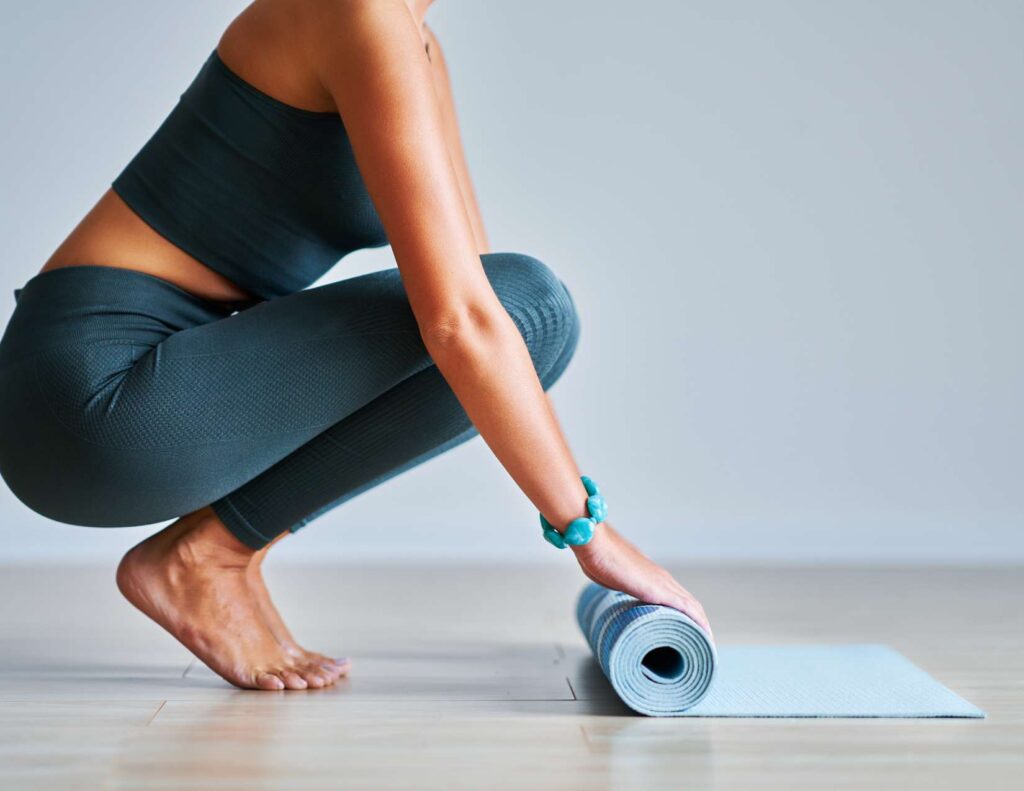
Table of Contents
Understanding Low Back Pain and Sciatica
Low back pain is a common condition that affects up to 80% of adults at some point in their lives. It can be caused by a variety of factors, including poor posture, muscle strain, herniated discs, and arthritis. Sciatica is a specific type of low back pain that occurs when the sciatic nerve, which runs from the lower back down the back of each leg, becomes compressed or irritated. This can cause a sharp, shooting pain that radiates down the leg.
Both low back pain and sciatica can be debilitating and affect your quality of life. They can make it difficult to sit, stand, walk, or even sleep. Fortunately, yoga can help!

How Yoga can Help Relieve Low Back Pain and Sciatica
Yoga is a gentle, low-impact form of exercise that can help relieve low back pain and sciatica in several ways. First, yoga poses can help stretch and strengthen the muscles in the low back, hips, and legs, which can alleviate tension and improve flexibility. Second, yoga can help improve your posture and alignment, which can reduce strain on your back. Finally, studies have shown that yoga can help reduce stress and promote relaxation, which can help alleviate pain and improve your overall well-being.
Precautions Before you Start Yoga for Low Back Pain and Sciatica
Before you start practicing yoga for low back pain and sciatica, it is important to take some precautions to ensure that you do not exacerbate your symptoms. First, it is important to consult with your doctor or a qualified yoga instructor to ensure that yoga is safe for you. Second, it is important to start slowly and gradually increase the intensity and duration of your practice. Third, it is important to listen to your body and stop if you experience pain or discomfort.
8 Yoga Poses for Sciatica Pain
Here are some yoga poses that can help relieve low back pain and sciatica:
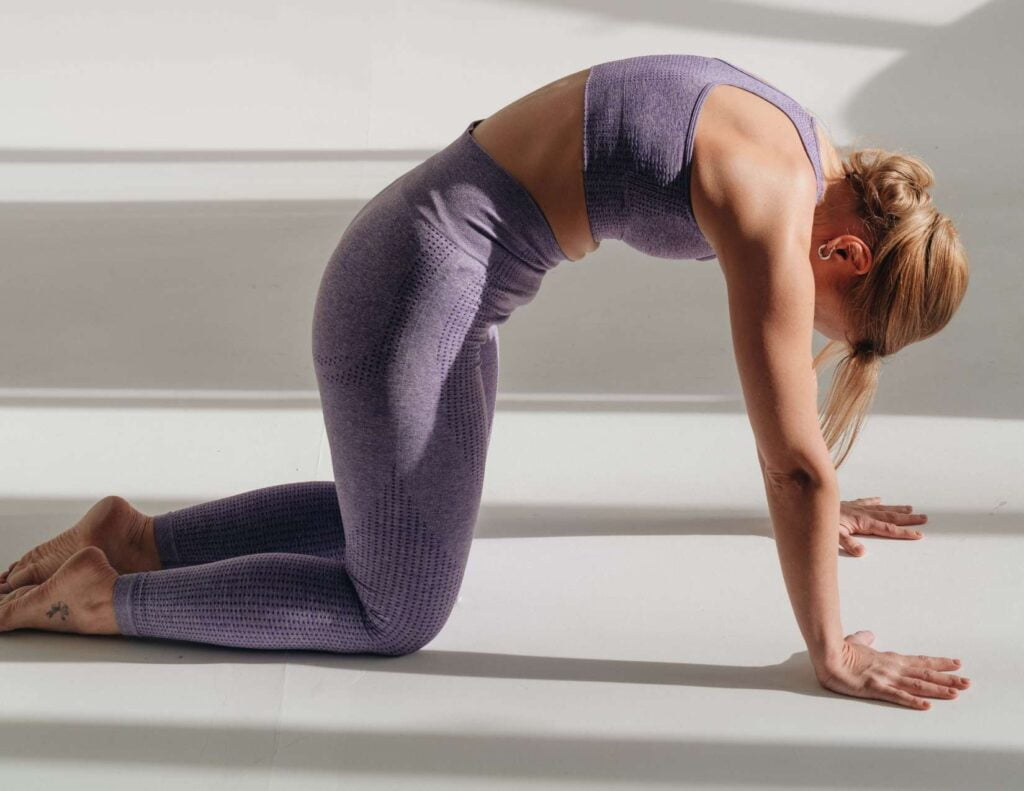
Cat-Cow
Start on your hands and knees with your wrists directly under your shoulders and your knees directly under your hips. Inhale and arch your back, lifting your tailbone and head towards the ceiling. Exhale and round your spine, tucking your chin towards your chest. Repeat for several breaths.

Downward Facing Dog
Start on your hands and knees with your wrists directly under your shoulders and your knees directly under your hips. Spread your fingers wide and press through your hands as you lift your hips up and back. Keep your knees bent and your heels lifted off the floor. Hold for several breaths.
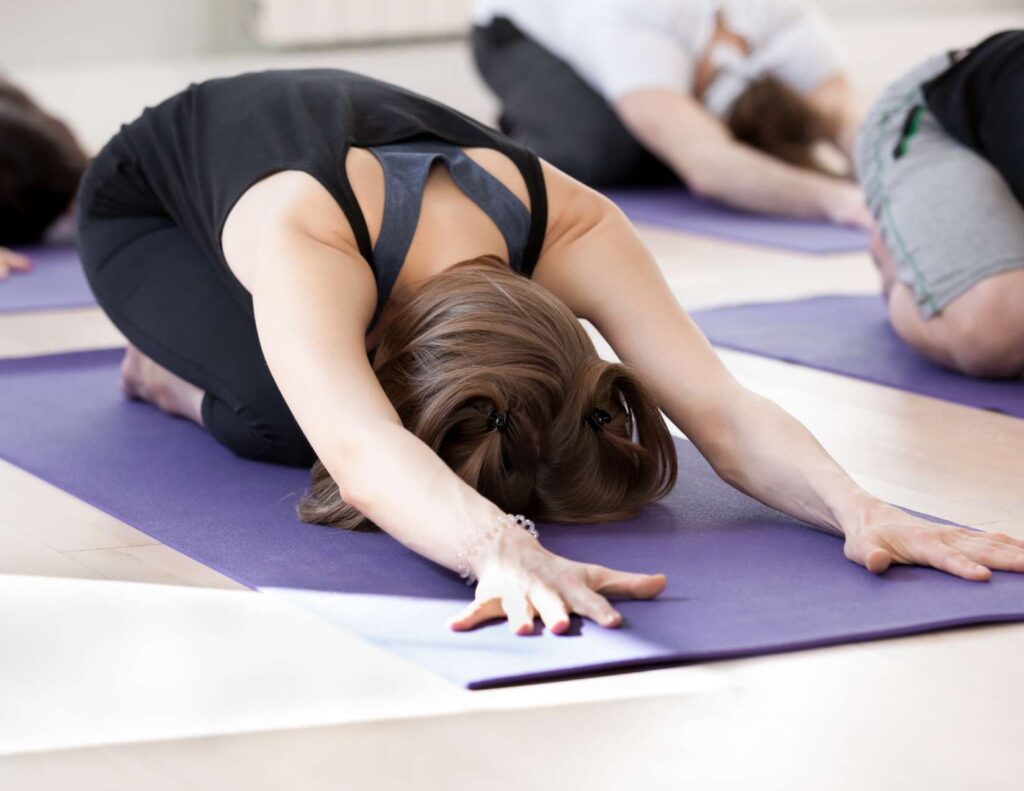
Child’s Pose
Start on your hands and knees with your wrists directly under your shoulders and your knees directly under your hips. Lower your hips back towards your heels and stretch your arms out in front of you. Rest your forehead on the floor and breathe deeply.
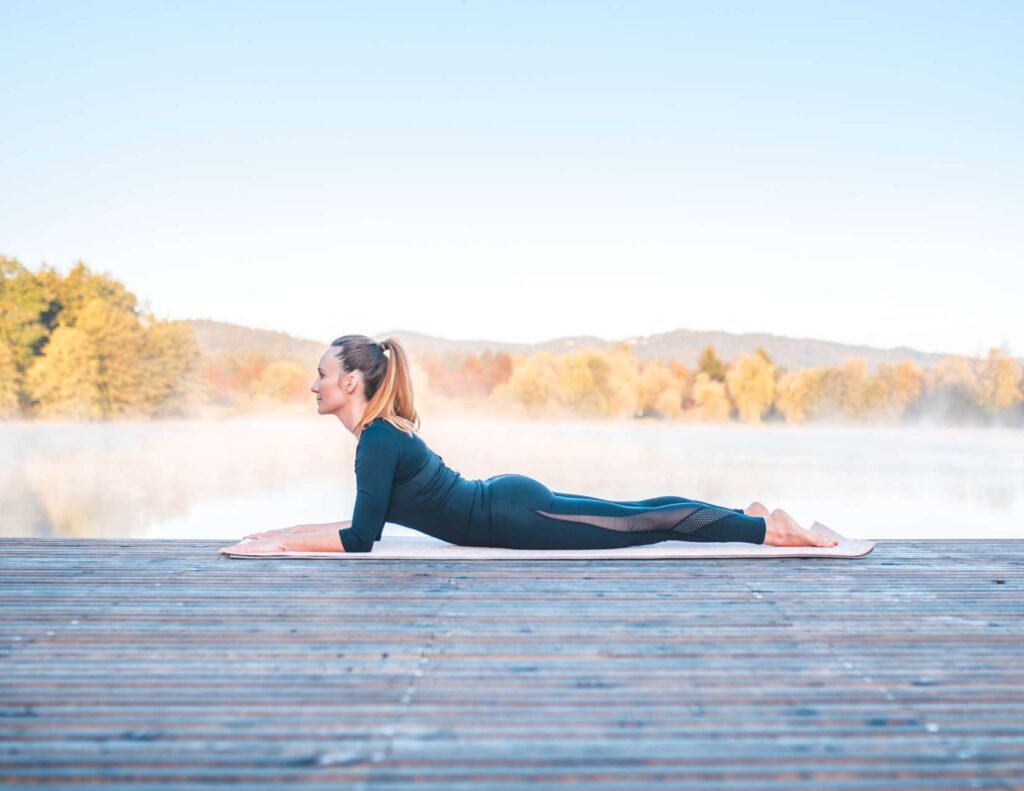
Sphinx Pose
Lie on your stomach with your forearms on the floor and your elbows directly under your shoulders. Press your forearms down and lift your chest up, keeping your shoulders relaxed. Hold for several breaths.
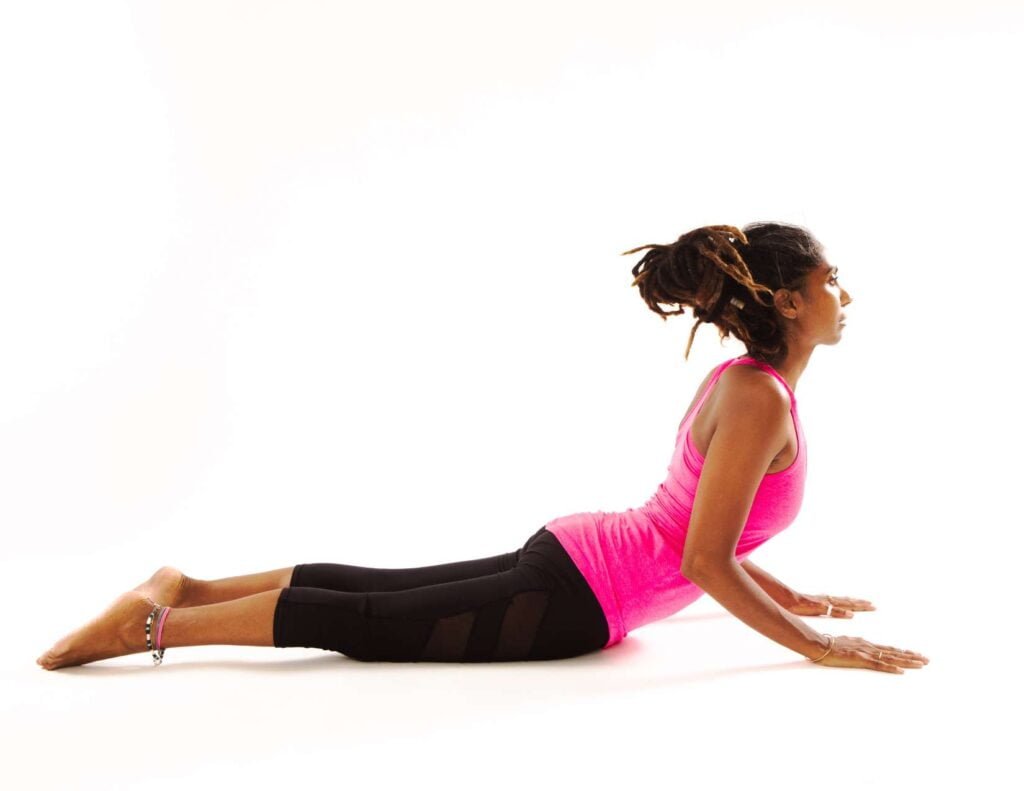
Cobra Pose
Lie on your stomach with your hands under your shoulders and your elbows close to your body. Inhale and press into your hands as you lift your chest up. Keep your shoulders relaxed and your elbows close to your body. Hold for several breaths.
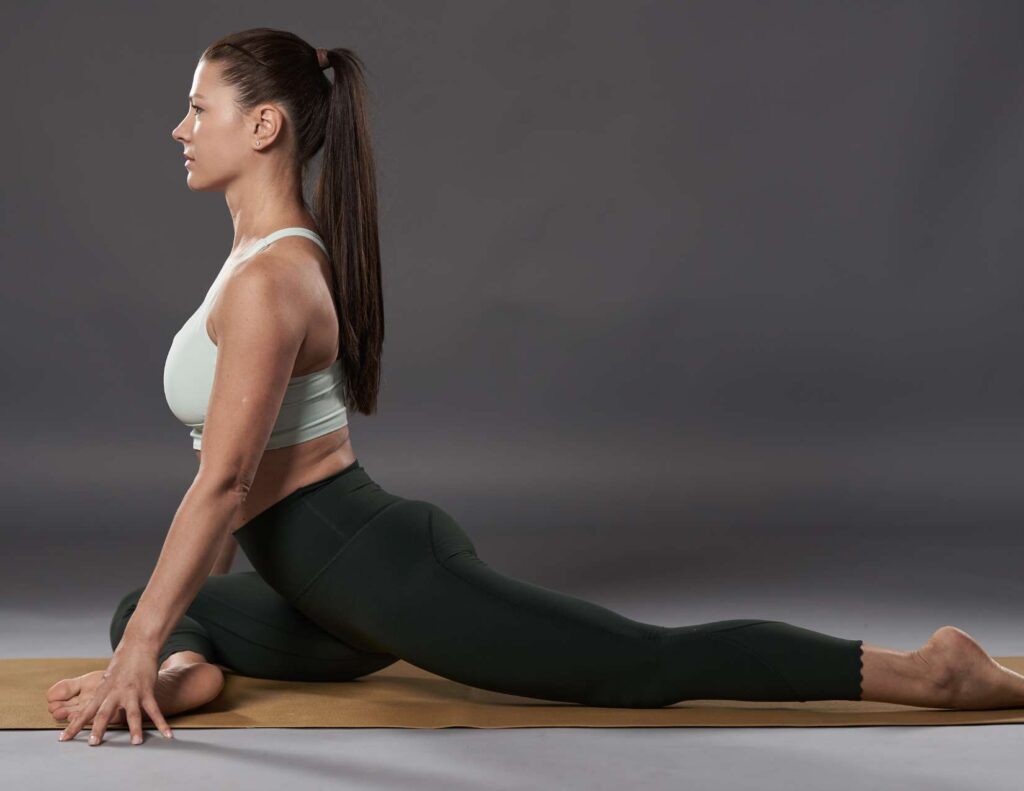
Pigeon Pose
Start in a downward facing dog pose. Bring your right knee forward and place it behind your right wrist. Extend your left leg behind you and lower your hips towards the floor. Hold for several breaths and then repeat on the other side.

Seated Spinal Twist
Sit on the floor with your legs extended in front of you. Bend your right knee and place your right foot on the floor on the outside of your left knee. Twist to the right and place your left elbow on the outside of your right knee. Hold for several breaths and then repeat on the other side.

Legs-Up-The-Wall Pose
Begin by lying on your back, with your legs extended out in front of you. Gently bring your knees into the chest, then open them up to the side. Slide your tailbone close to a wall, and then lift your legs upwards until they are resting against the wall at a 90 degree angle. Rest here for as long as comfortable (about 20 minutes).
Modifications and Variations for Each Pose
Each of these poses can be modified or varied to suit your individual needs. For example, you can use props such as blocks, blankets, or straps to help support your body in certain poses. You can also adjust the intensity of each pose by holding it for longer or shorter periods of time.
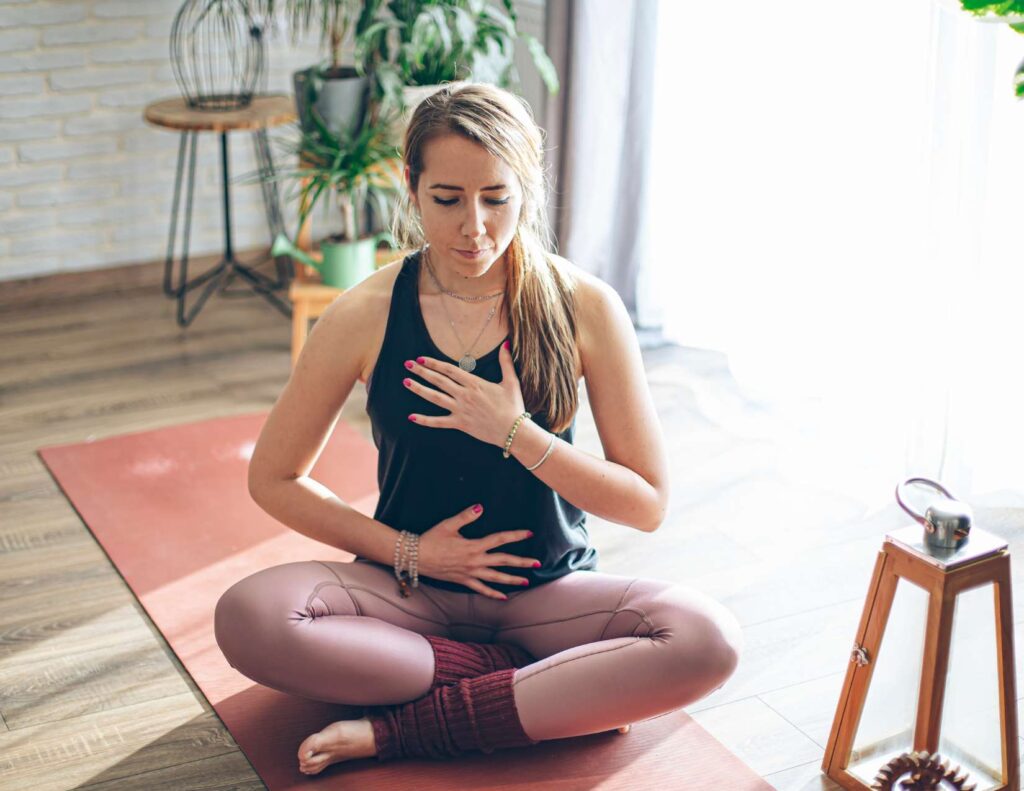
Breathing Techniques to Enhance the Benefits of Yoga for Low Back Pain and Sciatica
Breathing techniques, or pranayama, can help enhance the benefits of yoga for low back pain and sciatica. One simple technique is to focus on your breath as you move through each pose. Inhale as you lengthen your spine and exhale as you deepen the stretch. Another technique is to practice deep, slow breathing, which can help reduce stress and promote relaxation. It’s important to lessen stress as stress has been shown to cause sciatica to flare up.
Tips for Maintaining a Regular Yoga Practice for Low Back Pain and Sciatica Relief
To experience the full benefits of yoga for low back pain and sciatica relief, it is important to maintain a regular practice. Here are some tips to help you stay motivated:
- Set a regular schedule and stick to it.
- Find a yoga class or instructor that you enjoy.
- Practice with a friend or partner for accountability.
- Try different types of yoga to keep your practice fresh.
- Keep a Sciatica Pain Diary to track your progress and celebrate your successes!

Other Lifestyle Changes to Complement Yoga for Low Back Pain and Sciatica Relief
In addition to practicing yoga, there are other lifestyle changes that can help complement your efforts to relieve low back pain and sciatica. These include:
- Maintaining a healthy weight.
- Eating a healthy, balanced diet. And avoid these unhealthy foods for sciatica.
- Getting enough sleep.
- Using ergonomic furniture and tools at work and home.
- Avoiding prolonged sitting or standing.
- Using proper lifting techniques.
What type of yoga is best for sciatica?
Restorative yoga is an excellent choice for sciatica relief as it helps to reduce tension and inflammation in the muscles, resulting in less pressure on the sciatic nerve. Additionally, some poses may even help with pain management and promote better posture. Examples of restorative yoga poses for sciatica that are beneficial for pain relief include Child’s Pose, Reclined Cobbler Pose, Reclining Bound Angle Pose, and Reclined Hero’s Pose.
What are good yoga poses for sciatica in pregnancy?

Beneficial yoga poses for sciatica in pregnancy include butterfly pose, bridge pose, and cat-cow stretches. These poses can help to relieve pressure that is causing pain in the sciatic nerve. It is important to check with your doctor before beginning any new exercise routine during pregnancy. There are additional stretches for sciatica during pregnancy that would help as well.
What are some yoga poses to avoid with sciatica?
If you have sciatica, there are certain yoga poses that may aggravate the condition and should be avoided. These include stretching postures such as downward dog, forward bends, wide-legged standing poses like warrior poses, seated forward bends (like paschimottanasana), backbends (such as bridge pose or wheel pose), and twists (such as revolved triangle). It is best to focus on gentle yoga poses that keep the pressure off the sciatic nerve. Here are some other non-yoga exercises to avoid with sciatica.
When to Seek Professional Help for Low Back Pain and Sciatica
While yoga can be an effective way to relieve low back pain and sciatica, it is important to seek professional help if your symptoms persist or worsen. This may include consulting with your doctor, a physical therapist, or a chiropractor to help with sciatica.
Conclusion
Yoga can be a powerful tool for relieving low back pain and sciatica. By practicing yoga poses, breathing techniques, and making lifestyle changes, you can improve your flexibility, posture, and well-being. Remember to take precautions before starting a yoga practice, listen to your body, and seek professional help if needed. With consistency and dedication, you can find relief from practicing yoga for low back pain and sciatica and enjoy a healthier, happier life.







